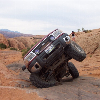vulnox
Active Member
- Joined
- July 4, 2011
- Messages
- 88
- Reaction score
- 0
- City, State
- Overland Park, Kansas
- Year, Model & Trim Level
- '11 XLT 202A
Sorry if this is common knowledge, but I am having a surprisingly hard time finding the answer. I searched for a few different keywords/phrases, but since 4WD/AWD/and the like are common on here, it was returning hundreds of results.
I wanted to get the 4WD Explorer for Snow and all that, but also because if we are on a longer trip on the freeway and the weather is bad, I want the vehicle to be able to shift power to any of the 4 wheels as required.
I know you can select Snow/Mud Ruts/etc, but if it is on driving mode, so basically nothing specific selected, and the vehicle loses traction, does it engage the rear wheels automatically?
I guess this would be a part-time AWD actually, not Full time, but I was just wondering if it does do this.
Thanks!
I wanted to get the 4WD Explorer for Snow and all that, but also because if we are on a longer trip on the freeway and the weather is bad, I want the vehicle to be able to shift power to any of the 4 wheels as required.
I know you can select Snow/Mud Ruts/etc, but if it is on driving mode, so basically nothing specific selected, and the vehicle loses traction, does it engage the rear wheels automatically?
I guess this would be a part-time AWD actually, not Full time, but I was just wondering if it does do this.
Thanks!










